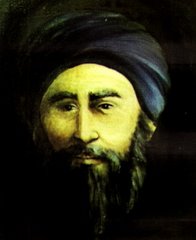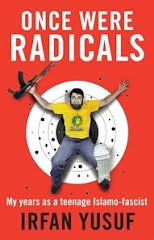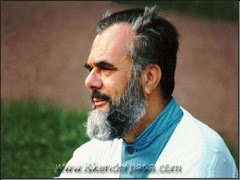The October 7 2007 edition of the New York Times magazine includes a profile of Iraqi-American author Kanan Makiya, who wrote (under the pen-name of Samir al-Khalil) one of the most influential biographies of Saddam Hussein.
There's plenty in the profile to blog about. Despite spending much of his undergraduate years a supporter of the Palestinian cause, Makiya wasn't exactly fond of fellow Columbia University Professor Edward Said. Makiya promised George W Bush on the eve of the Iraq invasion that Iraqis would greet US forces with "sweets and flowers".
What particularly struck me was the description of historical Baghdad. The profile speaks of perhaps Makiya's most important achievement - the documentation of Saddam Hussein's atrocities under the auspices of the Iraq Memory Foundation.
Since 2003, Makiya and his small staff have scoured Baath party offices and dungeons, adding to a collection that would reach more than 11 million pages of records. And they began filming interviews with the regime’s victims.
Makiya’s dream was to build a museum for the archives on the site of the Victory Arch, the memorial commissioned by Hussein to commemorate Iraq’s so-called triumph in the Iran-Iraq War ... Among the foundation’s most vivid achievements are the 190 videotaped testimonies from Hussein’s victims. They include Sunnis, Shiites, Kurds and even Jews.
One of these testimonies takes us back to a time when Baghdad was a centre of Jewish cultural life. Thanks to the infiltration of Ba'athist ideology, the tolerance of devout Iraqi Muslims was undermined. Suddenly, anyone deemed non-Arab became a target. And supporting Palestinian rights became a cover for some of the most virulent and despicable acts of anti-Semitism.
In December 2003, at the age of 98, Shao’ul Sasson, for example, described his arrest and torture at the hands of the Baath Party police. Sasson, who died in 2005, was an Iraqi Jew. As late as the mid-1930s, Baghdad was one of the world capitals of Jewish life, with Jews making up a third of its population. Most of Iraq’s Jews either fled to Israel or were expelled beginning in the late 1940s; most of the rest were harassed or killed. In January 1969, in one of the Baath Party’s first displays of public brutality, 13 Iraqi Jews and 4 other men were hanged in a public ceremony in Baghdad before a crowd of about a half million people. Iraqis were bussed in from around the country to witness the event.
“I was born in Baghdad,” Sasson says on the videotape. “My father was the chief rabbi. He sent me to a Jewish school to learn Hebrew, but I can’t remember much of it.
“I was working for Mohammed al-Damarchi. My salary had been stopped because I was Jewish, and there was a warrant out for my arrest. They knocked on the door and asked for Shao’ul.
“My wife said, ‘Let him take his clothes or put something on,’ but they said there was no need, as I would be brought back soon. They blindfolded me and took me away. I could tell we were going to the notorious Al-Nihaya Palace prison, because I lived in the same area. . . . They asked me to confess to everything, but I told them I didn’t have anything to confess to. And yet they insisted I must. They brought a metal bar and hit me on my legs. I fell into the wall and broke two teeth. Again, they told me to confess and hit me on the legs. Again, I fell and broke a few teeth. I lost 9 or 10 teeth that day.
“I saw Abdul Rahman al-Bazzaz (the former prime minister). They had hung him up and burned his tongue with matches. . . . My worst experience was the day I saw all the prisoners hanging up on either side of the corridor.
“They put me in a cell where the floor was covered in urine and feces. I couldn’t bear to stay in it, so I would bang my head hard against the wall in an attempt to kill myself.”
The Prophet Muhammad is reported to have said: "Those who so much as lay one finger on the dhimmi (non-Muslim citizen of an Islamic state) will have me witnessing against them on the Day of Judgment."
Sadly, so many Muslim politicians like to flex their political muscle at the expenses of non-Muslim minorities. Those of us fortunate enough to live as Muslim minorities in non-Muslim countries should be at the forefront of campaigning for non-Muslim minorities in Muslim countries.
© Irfan Yusuf 2007










